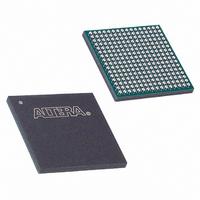EP2C5F256C8N Altera, EP2C5F256C8N Datasheet - Page 49

EP2C5F256C8N
Manufacturer Part Number
EP2C5F256C8N
Description
IC CYCLONE II FPGA 5K 256-FBGA
Manufacturer
Altera
Series
Cyclone® IIr
Datasheet
1.EP2C5T144C8N.pdf
(168 pages)
Specifications of EP2C5F256C8N
Number Of Logic Elements/cells
4608
Number Of Labs/clbs
288
Total Ram Bits
119808
Number Of I /o
158
Voltage - Supply
1.15 V ~ 1.25 V
Mounting Type
Surface Mount
Operating Temperature
0°C ~ 85°C
Package / Case
256-FBGA
No. Of Logic Blocks
288
Family Type
Cyclone II
No. Of I/o's
158
I/o Supply Voltage
3.3V
Operating Frequency Max
320MHz
Operating Temperature Range
0°C To +85°C
Rohs Compliant
Yes
Lead Free Status / RoHS Status
Lead free / RoHS Compliant
Number Of Gates
-
Other names
544-1656
Available stocks
Company
Part Number
Manufacturer
Quantity
Price
Company:
Part Number:
EP2C5F256C8N
Manufacturer:
ALTBRA
Quantity:
36
Company:
Part Number:
EP2C5F256C8N
Manufacturer:
ALTERA82
Quantity:
1 080
Part Number:
EP2C5F256C8N
Manufacturer:
ALTERA/阿尔特拉
Quantity:
20 000
I/O Structure &
Features
Altera Corporation
February 2007
f
There are five dynamic control input signals that feed the embedded
multiplier: signa, signb, clk, clkena, and aclr. signa and signb
can be registered to match the data signal input path. The same clk,
clkena, and aclr signals feed all registers within a single embedded
multiplier.
For more information on Cyclone II embedded multipliers, see the
Embedded Multipliers in Cyclone II Devices chapter.
IOEs support many features, including:
■
■
■
■
■
■
■
■
■
■
■
■
Cyclone II device IOEs contain a bidirectional I/O buffer and three
registers for complete embedded bidirectional single data rate transfer.
Figure 2–20
input register, one output register, and one output enable register. You can
use the input registers for fast setup times and output registers for fast
clock-to-output times. Additionally, you can use the output enable (OE)
register for fast clock-to-output enable timing. The Quartus II software
automatically duplicates a single OE register that controls multiple
output or bidirectional pins. You can use IOEs as input, output, or
bidirectional pins.
Differential and single-ended I/O standards
3.3-V, 64- and 32-bit, 66- and 33-MHz PCI compliance
Joint Test Action Group (JTAG) boundary-scan test (BST) support
Output drive strength control
Weak pull-up resistors during configuration
Tri-state buffers
Bus-hold circuitry
Programmable pull-up resistors in user mode
Programmable input and output delays
Open-drain outputs
DQ and DQS I/O pins
V
REF
pins
shows the Cyclone II IOE structure. The IOE contains one
Cyclone II Device Handbook, Volume 1
Cyclone II Architecture
2–37















